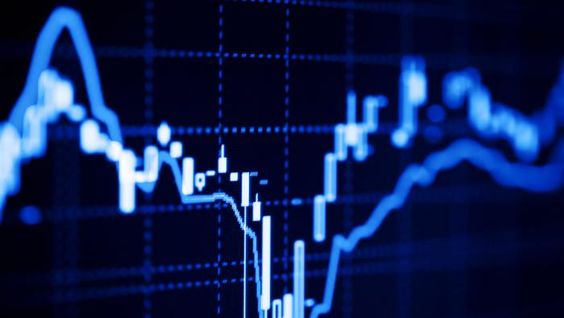Scalping is a short-term trading strategy in forex that aims to profit from minor price fluctuations in the forex market. Scalpers will buy and sell a foreign currency pair in seconds or minutes, only holding the position for a few seconds or minutes. They then repeat this process throughout the day to profit from price variations regularly.
A pip (percentage in point) is another name for the slightest price movement a currency may make in the forex market, which traders use to calculate profits and losses. Forex scalpers try to generate a substantial profit by the end of the day by scalping between 5-10 pips from each position. Arbitrage trading is a type of forex scalping.
What is scalping in forex trading?
Scalping is a short-term forex strategy that tries to profit from small price swings. Leveraged trading is used in the top forex scalping techniques. In forex, leverage is a strategy that allows traders to borrow money from a broker to acquire additional exposure to the market while only putting down a tiny portion of the total asset value as a deposit. This method can increase profits, but it can also increase losses if the market does not move in the bet’s favor. As a result, forex scalpers must constantly monitor the market for any changes.
Indicators for Scalping strategies in forex trading
- Bollinger Bands
Bollinger Bands are often used by traders to identify areas of market volatility. Bollinger Bands are a type of volatility indicator that uses a simple moving average (SMA) with a standard deviation set above and below it to represent how volatile a market is.
Traders believe that higher standard deviations imply higher volatility in the underlying market. If the bands are thin, however, it could indicate that the underlying market is stable.
Traders speak to a ‘Bollinger bounce’ when the standard deviations (bands) widen, which is thought to signal an impending retracement. A ‘Bollinger squeeze,’ or narrowing bands, is thought to foreshadow an impending breakout in the underlying asset. Bollinger Bands can be used in conjunction with other forex scalping indicators to create a profitable scalping strategy.
- Moving average (MA)
A moving average is a mathematical formula that is depicted as a single line representing an average and is used to spot emerging and common patterns in markets. Simple moving average (SMA) and exponential moving average (EMA) are the two forms of moving averages (EMA). Moving averages are widely used in most forex scalping methods since they are simple to read.
SMAs multiply a collection of numbers by the number of values in the set. Shorter-term averages and one longer average are frequently used by forex scalpers to identify a trend.
- Stochastic oscillator
A stochastic oscillator is a technical indicator that compares the present value of a currency pair to its historical range. The stochastic oscillator can be used by scalpers to determine if a trend will turn bullish or negative.
When the solid black line (called the percent Kline) crosses the dotted red line (called the percent D line) on a stochastic oscillator, it indicates that a market direction change is approaching. These price swings usually occur at the extremes of a recent price range.
- Parabolic stop and reverse (SAR)
The parabolic SAR is a technical indicator that appears as a series of dots above or below the market price. Scalpers generally use it to identify probable market reversals and determine the ideal timing to enter and exit a market.
When red dots are above the current price, it is a sell signal, signaling that the market is about to turn negative. Green dots below the current price are considered a purchase signal, signaling a possible bullish market. Scalpers might interpret the emergence of the first green dot following a string of red dots.
- Relative strength index (RSI)
The RSI is a momentum indicator that employs a range of zero to 100 to determine whether the current direction of an underlying market is about to reverse. It employs support and resistance levels of 30 and 70, respectively, to determine when the market’s trend is poised to change direction.
When the RSI exceeds 70, the market may be overbought, and a trader may gain from entering a short position. If the RSI falls below 30, the market may be oversold, and a trader might consider opening a long position. The RSI went above 70 in our example of the GBP/JPY pair, signaling an impending trend reversal.
Forex price action scalping
Price action trading is a method of trading that does not require the use of an indicator. Instead, forex scalpers examine technical analysis factors while focusing solely on price. This may be seen in candlestick charts, which use support and resistance levels as well as trendlines to extract the same information as a technical indicator. Traders can make an informed decision based on trend continuations by doing in-depth price research and will only execute a trade if the objective has the proper risk-reward ratio.
Forex price action scalping overlooks all aspects of fundamental analysis in favor of a technical approach, and these traders do not consider other external factors that may influence the price of a currency pair. Inflation, economic growth, supply and demand, trade status, interest rates, and account balance are only a few of the main economic factors that influence the price of foreign currencies.
If you want to know more about the strategies like scalping trading strategies in forex or want to develop an excellent forex trading strategy, then you can enroll in the Capital varsity forex trading course where you will learn about the forex strategies in detail Our training includes strategies that are ready to trade and those, we utilize ourselves.
If you want to learn more about forex trading strategies such as Scalping trading strategies or develop an excellent forex trading strategy then you can enroll in the Capital varsity forex trading course, where you will learn about forex trading strategies in depth. Our training includes strategies that are ready to trade as well as strategies that we use ourselves.

